
(Photo: Approaching the big overhang on Stannard's Roof (5.10a).)
I just finished a whole week in the New Paltz area with my wife and kids. It has become our tradition to rent a house in or around New Paltz for a week in July every year. It is my wife's way of indulging me. She likes running in the area, there are great family hikes, and the community pool is nice. But we wouldn't do it if I were not a rock climber.
Last year we got into a nice groove in which I met up with Gail for several days in a row to climb. We would get up early, spend a few hours at the cliff, and then return to our respective families. These short climbing days allowed both of us to climb before it got too hot, and without taking too much time away. This year I hoped to repeat the same system. I was going to climb for one full day on Saturday, June 29, but apart from that day I expected that during our week in New Paltz I'd get out climbing for just a few mornings with Gail.
I hoped to hit several of my 5.10 targets, some old, some new. I wanted to try a second run at Balrog, P-38, and maybe even Simple Stuff or Directississima. And I hoped to flail away at some new ones. Probably my top candidate was Feast of Fools (5.10a).
As the trip approached I made plans to climb on Saturday with Maryana and Nani. I hadn't climbed with either of them outside in a while. As the day neared Gail decided to join us as well, so it looked like we'd have two parties. Maryana suggested we meet up in Lost City, where we could set up top ropes near each other and hang out. I was agreeable, but I knew I wouldn't be happy just top-roping all day. I had some trad-lead goals in Lost City, chief among them two new 5.10's on my list: Lost City Crack (5.10b) and Stannard's Roof (5.10a). I figured we could top rope for a while, but I intended to do some leading when the right time came along.
On Saturday, Gail and I arrived at the parking lot before Maryana and Nani. We headed out on the High Peters Kill Trail until we reached Lost City. We wandered straight up the boulder field to the cliffs and found ourselves in one of the spots I'd previously visited. I later heard another climber call this area the Amphitheater. This area has several easy climbs in the 5.6 to 5.8 range, a rarity at Lost City. Most of the walls at Lost City are so steep that the entry level climbs are 5.10 or 5.11.
It had rained a bit on each of the previous two days but the climbs seemed dry enough. Gail started us off by leading an easy corner climb on the left side of the Amphitheater (mostly 5.easy, maybe 5.5 or 5.6 for one or two moves?), and then I led a very nice vertical crack climb right in the middle of the wall. It starts off steep and committing, up a slanting crack, but then after about fifteen feet a ledge is reached and it gets easier. The angle lessens and there are frequent rests. But the good moves just keep on coming. I really liked this pitch. I would say it is a good Gunks 5.8 (Gail thought maybe 5.9). I don't know if it has a name. We named it the "5.8 Death Warm-Up."
While Gail and I were warming up in the Amphitheater, Maryana and Nani arrived and went over to the Corridor area, setting up a rope on Gold Streaks (5.11b). I've been on that one twice before and although it is really good I wasn't that psyched to hit it again. But I was keen to get back onanother great 5.11b just around the cornercalledForbidden Zone.So I set that one up for us and then nearly sent it on the first go. At the upper crux I missed the key hidden hold and fell off. As soon as I looked up I could see the hold I missed, and then I went up and finished it. Gail did really well on Forbidden Zone. It was her first time on the climb and she got through the crimpy, tense start and the steep, bulgy middle without a fall, struggling only with the technical moves to the hidden hold at the final crux. Forbidden Zone is such a great pitch-- if every top rope were this good I'd consider converting to the top rope lifestyle. I can't imagine ever leading it. I'd have to have it really wired. There is gear here and there, but nothing for the really tough moves right off the deck. The landing is not good: it is a pile of pointy boulders. I think for me it will forever remain a great top rope.

(Photo: Getting ready for the big reach into the ceiling on Stannard's Roof (5.10a).)
Gail and I left our rope on Forbidden Zone for Maryana and Nani and took a little walk around the right side of Lost City, finding a wet, slimy Lost City Crack and discovering faces and chasms we'd never seen before. There is so much exploring one can do at Lost City. By the time we got back to the Corridor I was ready for my big lead of the day. We took a pass on Gold Streaks and headed with Maryana's rope over to Stannard's Roof. This impressive overhang is a bit to the left of the Amphitheater. I had taken a peek at it earlier in the day and it looked nice and dry.
I had asked Gail to bring an extra yellow Number Two Camalot for me because Parker had once told me that the ceiling takes two of them. I'd also heard that the face beneath the roof goes at 5.8 and that the belay right below the roof is optional. That was about all I knew about Stannard's. We got racked up and I started climbing.
The start goes up an easy chimney and then some very nice 5.8 moves take you up a crack through an orange face. Soon the angle eases and you are beneath the huge ceiling, which looks even bigger once you are really up against it. As of this writing there is a small fixed nut in the crack at the back of the ceiling, and you can get up there and clip it, then return to the optional belay stance and think about how you are going to make the first big reach out to the good holds in the roof.
It is very intimidating. This first big move out is committing, and it is the hardest move of the sequence. There is a little creaky flake to grab, and then a big move to the jugs. I looked it over from several different angles. I shifted my gear around so that, in theory, my two yellow Camalots would be easy to reach.
Then I went for it.

(Photo: Fully in it, right hand on the creaky flake, left hand in the jugs.)
Once you do the big reach you are fully horizontal for the remainder of the roof. There is no time to dilly-dally. When you make it to the first good hold you can throw in a yellow Camalot and make the moves to the next great horizontal slot. I managed this first part just fine.
As I reached the next great horizontal, the end was already in sight. I wanted to place the second yellow Camalot and get out. I could see a positive-looking hold at the lip of the roof. If I could get there, just one move away, I figured I was as good as done.
I want to note here, before I go into my old familiar story of failure, that I really should have gotten this route on-sight. My footwork was solid. I had a good plan. I tried really hard. I had a great handhold and a wonderful heel lock. I just needed to plug and go. It kills me that I messed this one up.
Poor gear management was my undoing.
I reached for the yellow Camalot but I couldn't get it free. I struggled like mad to unhook it. I was wearing a gear sling and everything was difficult to reach, hanging way down beneath me.
I know what you're thinking. I am aware that wearing a gear sling is the mark of the gumby. But I have never liked the weight of all the gear on my harness. Usually I prefer using the gear sling, no matter what other people think. But not this time. Under Stannard's Roof the sling turned out to be a big liability. Even though I'd put the yellow Camalot in the first section of the sling, I had a devil of a time prying it loose. It seemed like I was fumbling forever, just hanging in there. My left hand was on a great hold but it was getting more and more sweaty. I could feel my grip getting weaker and weaker. I had to get that cam! Finally I got the cam off of the sling, reached up to place it.....
And it was the wrong Camalot, the green! I had been blindly grasping for the piece, and I grabbed the wrong one. I was officially screwed, and I knew it. I stuck the green cam on my harness and started fumbling for yellow all over again, but my left hand slipped and I took a fall. I had blown it. It was a good little whip but the fall was clean.

(Photo: Trying to place gear on Stannard's Roof, but grabbing the wrong cam.)
I don't know why I didn't just take the yellow cam off the gear sling then and there and put it on my harness, but I didn't think of it. I went back up again, fumbled all over again, and this time ultimately placed the cam. But now I was exhausted and took another fall reaching for the lip. Finally on my third time up I didn't need to place gear and I just executed the moves, getting over the lip and finishing the route. It actually felt easy without all the idiotic fumbling and bumbling.
I can add Stannard's Roof to the long list of Gunks 5.10's that I have failed to get on-sight. Even more than the others, I feel like I can just fire through it next time. It is a three-star experience, for sure. The 5.8 face is really nice and the roof is everything the Gunks is all about. I just know I can do this climb. Next time I'll keep the gear on my harness. And I'll probably split it into two pitches. Doing it as one pitch made for truly horrible drag at the top.
By the time we were done with Stannard's I felt like I'd been put through the wringer. We went looking for our friends but it took a while to find Maryana and Nani. We went to the right side of Lost City to look for them while they went left to look for us. Eventually we found them beneath an incredible-looking finger crack called Resistance (5.10c). But none of us really felt like climbing it. We sat around and talked instead. It was a beautiful afternoon. I wasn't in a rush to do more climbing-- I figured I still had several good days ahead.
Sadly, it was not to be. On Sunday we went out to Bonticue with the kids and did the hike/scramble up the middle to the top. This was our second family trip up Bonticue. It is a beautiful cliff, white like Millbrook, and larger than I remembered. I've never climbed there. It looks like there are lots of fun lines to explore.

(Photo: My son Nate atop Bonticue.)
Storm clouds were rolling through as we did the Bonticue hike and we got just a little bit wet on the way back to the car. Later on, after we returned to our rental house, the skies really opened up. It poured like crazy for the next twenty-four hours. Gail and I had hoped to climb on Monday but we had to call it off.
The rain seemed to stop on Monday evening so Gail and I planned to meet on Tuesday morning. We knew it would be wet but Gail brought her aid gear, figuring we could get some practice aid climbing while we waited to see if the cliff would dry out.

(Photo: I'm not sure I've ever seen it running off quite this fiercely behind the Susie A block.)
When we got to the Trapps the whole area was covered in a misty fog. So we aided a wet Oscar's Variation (normally 5.7, but A0 for us). Gail went first so I could watch and learn. I'd never aid climbed before but it seemed simple enough. Gail was methodical about it, stepping up, placing gear, bounce testing, shifting weight to the new piece, clipping in with a fifi hook, then cleaning the aiders off the last piece and clipping the rope to it. When she finished the pitch she cleaned all the gear so I could lead it fresh. I found it difficult at first to trust the gear and step up, which is funny because I trust it enough to fall onto it all the time! After a few moves I got used to aid climbing and enjoyed it... to some extent.

(Photo: Gail aid climbing pitch one of Oscar's Variation (5.7 or A0).
It started to dry out a bit while we were working on Oscar's Variation. I ran up a slightly damp Ribless (5.6 and not so bad) to the first set of bolts, and from there I could see that the crux of Strictly From Nowhere (5.7) appeared to be dry enough for us. So even though the bottom part of the route was still pretty slimy I led that one too. The crux is always really good, the rest is fairly forgettable. It is much nicer to start Strictly's from the Oscar's corner when it is dry.

(Photo: My first time in aiders, climbing the wet Oscar's Variation.)
Conditions were finally improving but we both needed to leave for the day. There would be no big milestones on this day. We packed up and headed out.
The next day was Wednesday, our departure date. I negotiated with the wife for a few more hours of climbing and hoped against hope that it wouldn't rain overnight. Gail and I planned to meet early so I could get back to our house by check-out time.
When the day dawned I thought we were in luck. It was partly sunny at the house. Maybe the cliff would be dry?
Alas, I was too optimistic. The cliff was again shrouded in fog. As I arrived at the Trapps it seemed to be sprinkling a little. Gail and I headed to the Mac Wall to see if anything was in shape for climbing. When we got there Birdie Party and MF were both seeping. It was wetness everywhere.
Frustrated, I decided to lead Three Pines (5.3) to the GT Ledge, even though it was soaking wet. I just wanted to climb something and I figured it would be good practice. And I guess it was, although I wouldn't really call it fun. At times it felt more like wading through a running river than climbing.
Once I had the rope up we descended to the lower set of bolts and top-roped the first pitches of the two climbs underneath: Something Boring (5.9) and Something Or Other (5.7). These were both new to us. I didn't care much for either one. Something Boring is aptly named. It has unremarkable face climbing and no pro for most of its length. Something Or Other has a bit more to offer. In the early going you are supposed to use a wide crack that is filled with vegetation. I made it more interesting for myself by mistakenly staying right of the crack and doing some hard 5.9-ish moves on little crimpers. Next comes a good 5.7 move off a little ledge up to a jug. Not terrible for a rainy day, but I can't imagine we'll ever do either of these climbs again.
After four crummy pitches it was almost time to go. The sky was brightening but it was still quite wet. Gail and I started walking back to the parking lot, looking for one dry pitch that we could do. It wasn't long before we found ourselves beneath a good candidate: Uncle Rudy (5.7+). I have been interested in this roof-problem pitch for years but have never managed to get on it. (I have done pitch three, and it is really good.)

(Photo: Gail at the crux roof on pitch one of Uncle Rudy (5.7+).)
I liked this pitch. The roof is good, and the pro for the crux is great. The crux is actually two moves: one to get over the roof, and then another thin move up right after the roof. Dick Williams implies in his guidebook that you need a big cam to protect this second crux move, but I found it not to be so. The crack narrows to the right. I got a bomber gray Alien in this crack; lots of other cams would also work.
After the crux, pitch one of Uncle Rudy is pretty dirty and run out, but the climbing is easier. When I got to the belay ledge I considered continuing with Dick's 5.8 PG variation to pitch two, but as it seemed to be covered in wet lichen I decided to leave it for another day.
Uncle Rudy is no great classic, and sending it was no great achievement. But at least it was a pleasant little climb, which was about all I could ask for by the time our wet week was finished.
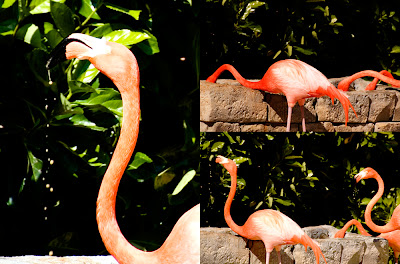

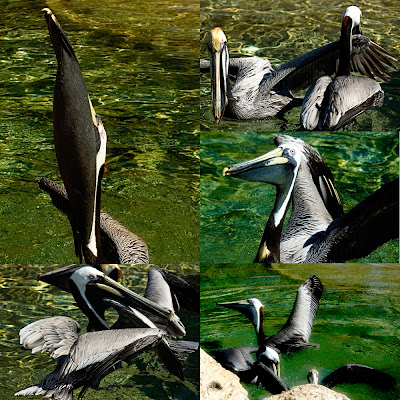



 The first mile of the new trail is almost ready to be opened! Trail crews are working on the finishing touches like some beautiful bridges to keep your feet dry crossing creeks, and rock walls that not only look cool but actually add to the stability of the trail. They should have the trail open soon, although the actual opening date has not been set, so until they actually open it please respect the closed area so crews can work uninterrupted to get projects finished. For now enjoy some of these photos that rangers were able to take during our sneak preview the other day. Stop by the White River ranger station for the all the latest information on the Glacier Basin trail, or any other trail for that matter.
The first mile of the new trail is almost ready to be opened! Trail crews are working on the finishing touches like some beautiful bridges to keep your feet dry crossing creeks, and rock walls that not only look cool but actually add to the stability of the trail. They should have the trail open soon, although the actual opening date has not been set, so until they actually open it please respect the closed area so crews can work uninterrupted to get projects finished. For now enjoy some of these photos that rangers were able to take during our sneak preview the other day. Stop by the White River ranger station for the all the latest information on the Glacier Basin trail, or any other trail for that matter. 
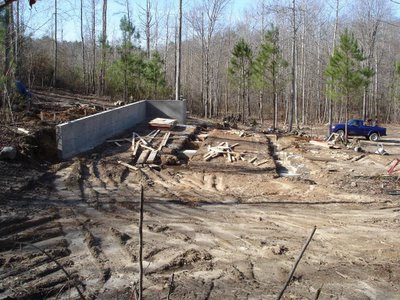

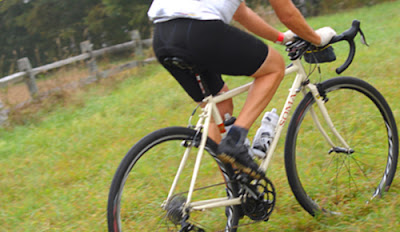

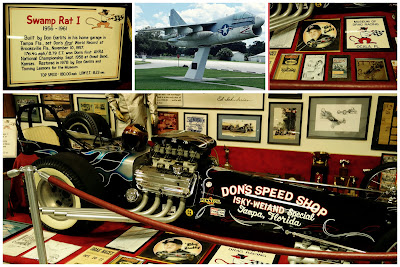

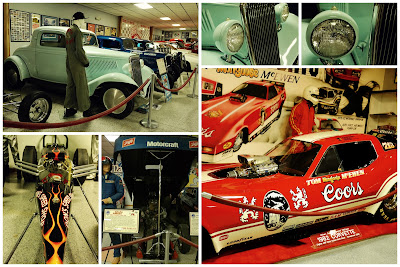



 Here is some cool historical data collected from the Longmire weather station. It was gleaned from the National Weather Services by NPS employee Bret Christoe and graphed by Crystal Raymond.
Here is some cool historical data collected from the Longmire weather station. It was gleaned from the National Weather Services by NPS employee Bret Christoe and graphed by Crystal Raymond.  Folks, bring your shovels, because according to the National Weather Service, our forecast for LONGMIRE this week is:
Folks, bring your shovels, because according to the National Weather Service, our forecast for LONGMIRE this week is: